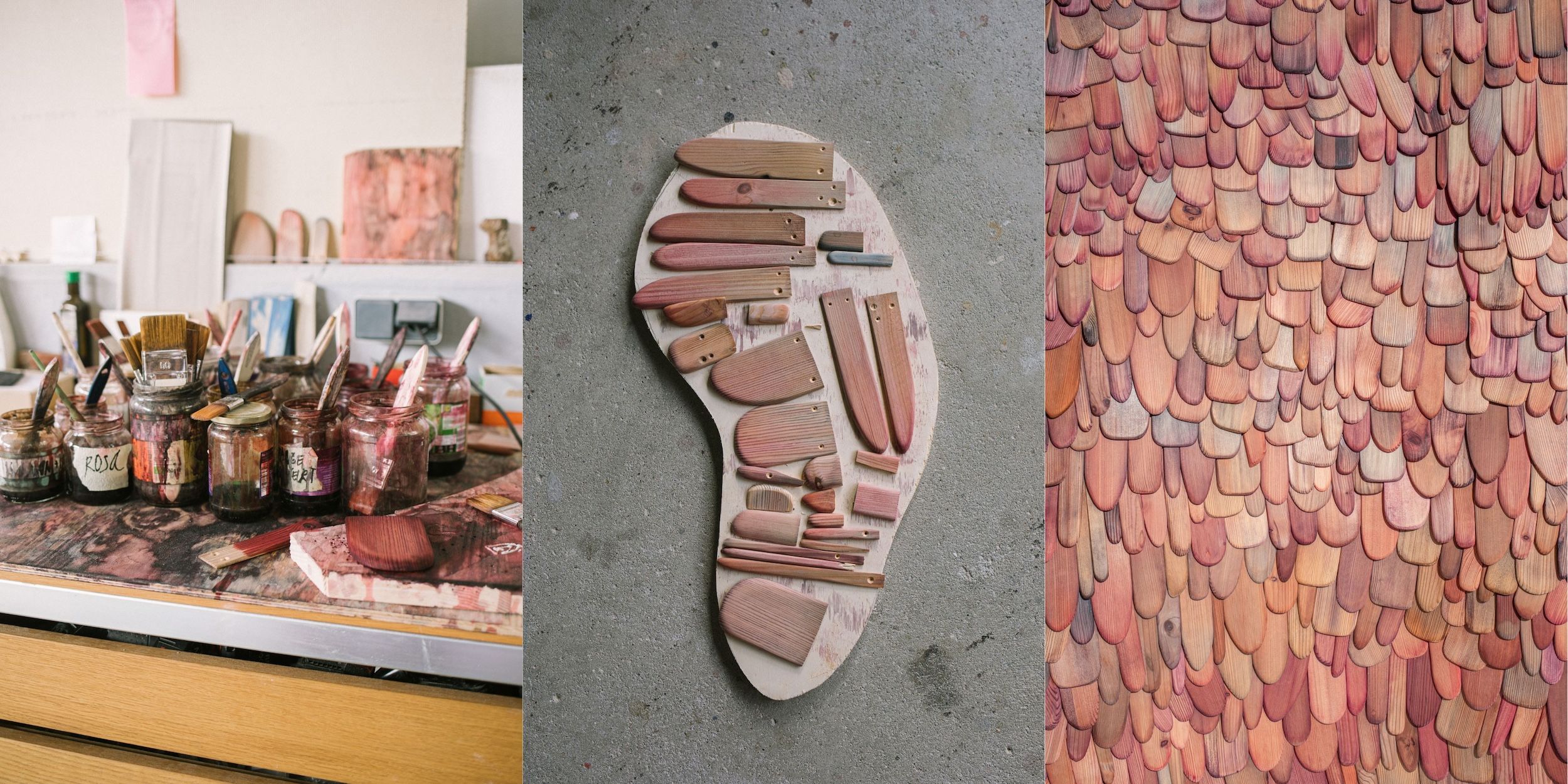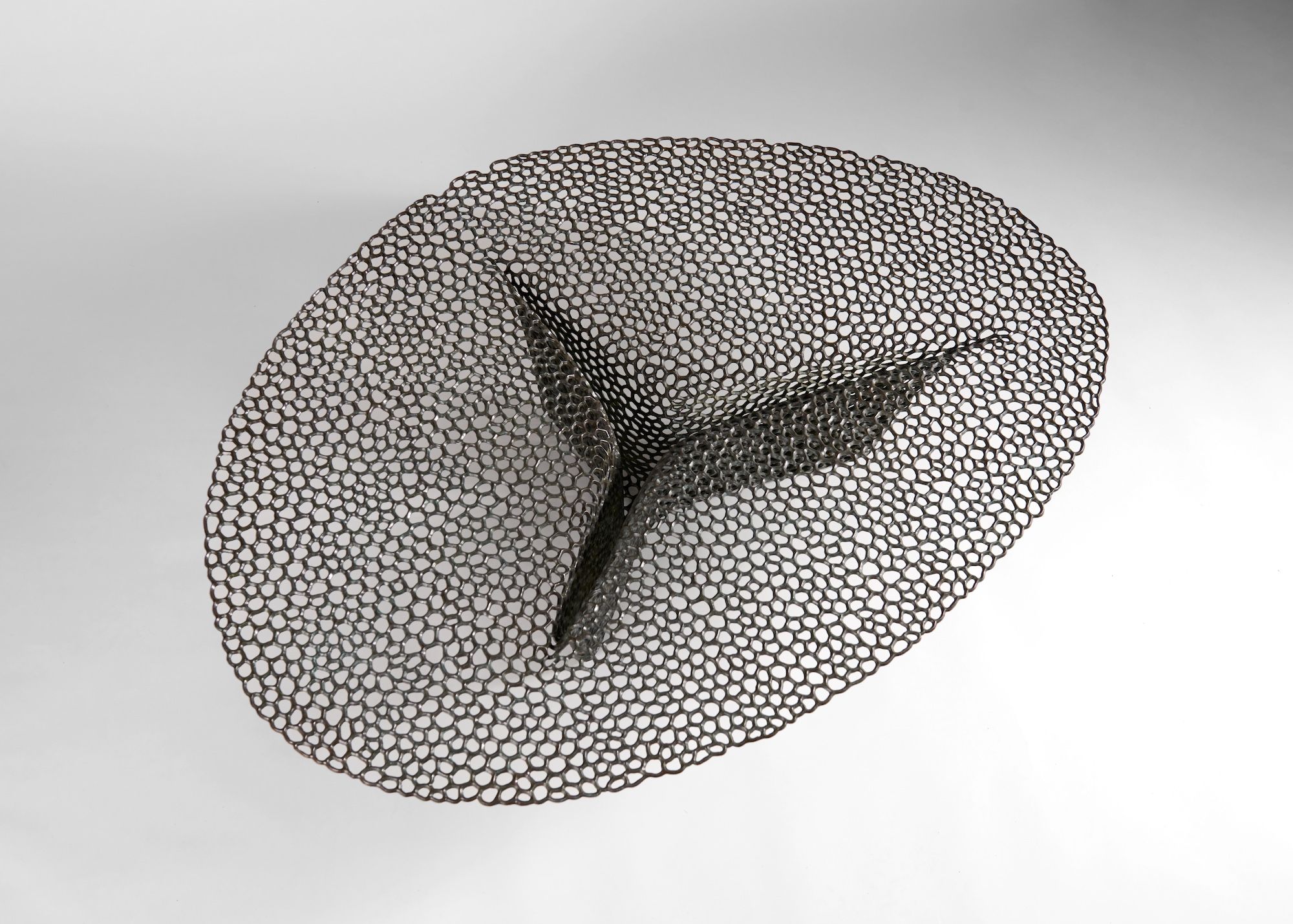OBJECT OF MY AFFECTION FEBRUARY 9 2024
by Design Miami
Three exquisitely crafted contemporary designs that demand a closer look
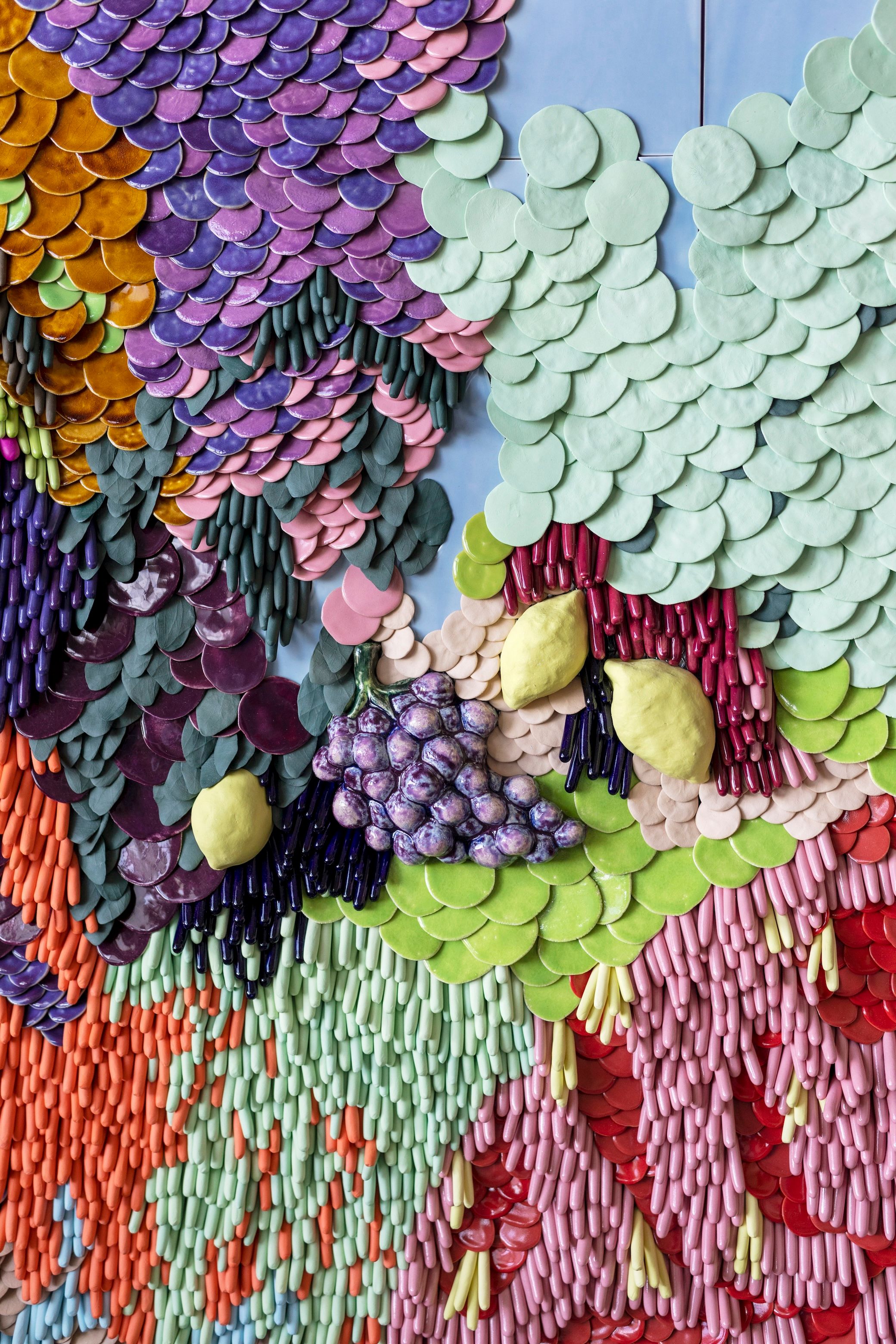
DETAIL OF SHANGRI-LA (2023) BY MARIANNE HUOTARI
Photo by Anna Autio; Courtesy of Hostler Burrows
Some of our favorite designs of late are marked by intricate, incredible detailing born of unseen, countless hours spent in the maker’s studio. This week, we spotlight pieces by three inspiring designers—Marianne Huotari, KAKU, and Lukas Wegwerth—whose work embodies patient, mindful, meticulous hands-on processes. Each, in their own way, weaves together time-honored craft techniques and resonant cultural touchstones—resulting in contemporary pieces that transport both makers and admirers beyond the everyday.

SHANGRI-LA BY MARIANNE HUOTARI
Photos by Anna Autio; Courtesy of Hostler Burrows
Helsinki-based Finnish designer Marianne Huotari crafts delicate ceramic wall rugs and glazed stoneware sculptures using a reimagined version of ryijy, a traditional Finnish textile technique. For each piece, Houtari—who was, notably, shortlisted in 2022 for the esteemed Loewe Craft Prize—sculpts hundreds of oblong ceramic beads and petals by hand, before sewing them onto a metal frame with wire. Her intricate, whimsical pieces harken to the natural world, and a single work can take weeks and even months to execute—contemplative hours Huotari spends engrossed in the intricate, repetitive nature of her process.
Her most recent ceramic tapestry, the dreamy
Shangri-la, debuted at Design Miami/ 2023 with Hostler Burrows. Describing the piece, Houtari says: "Shangri-la is a window to an idyllic escape, symbolizing the utopia of a perfect life. Stepping into the illusion, one can momentarily escape from everyday life or experience a deeper realization of the structures of the good life…[It is] an opportunity to dream, to seek change, and thus to grow."
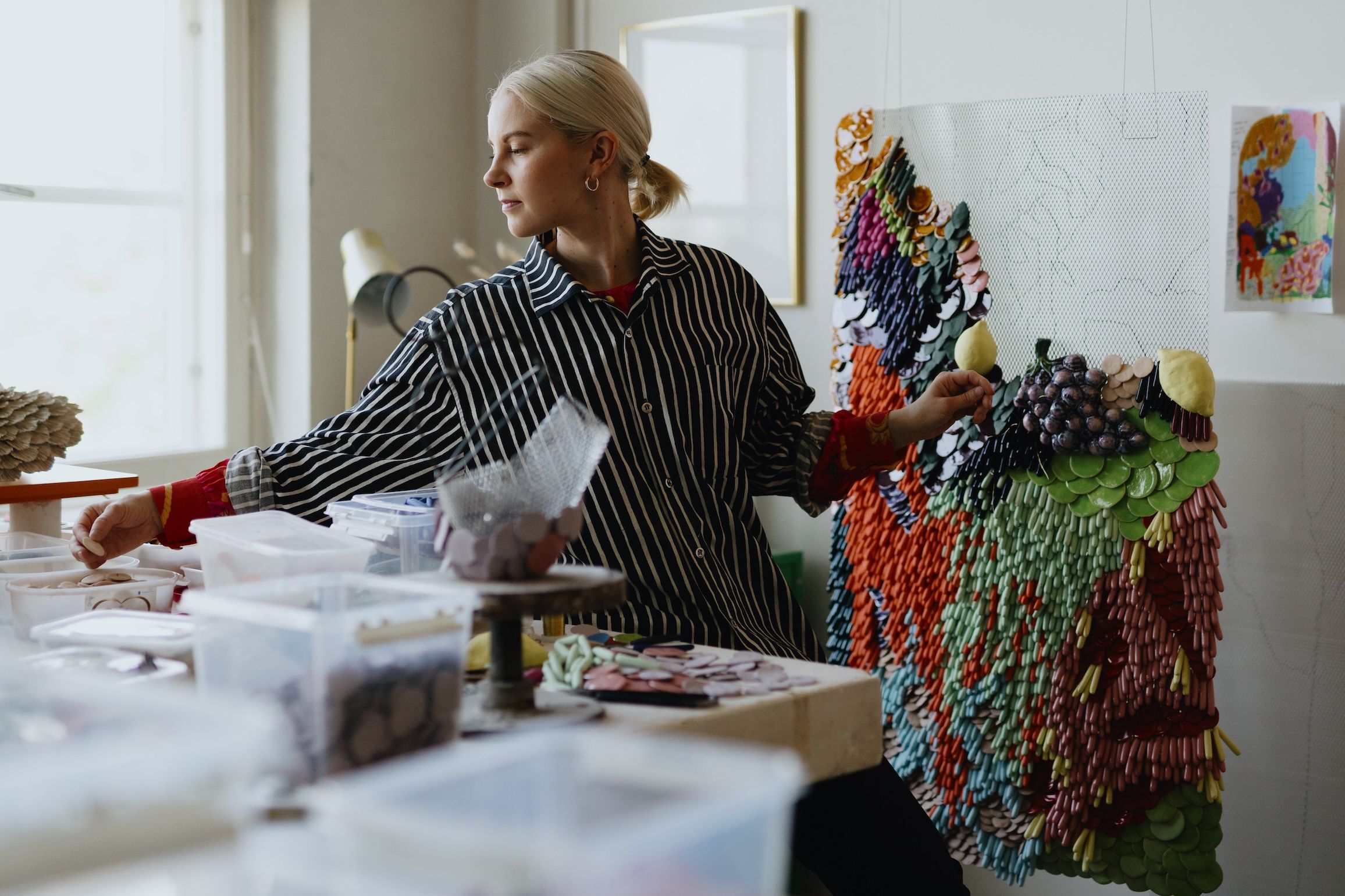
MARIANNE HUOTARI AT WORK ON SHANGRI-LA (2023)
Photo by Mitro Härkönen/Ornamo Art and Design Finland, Courtesy of Ornamo Magazine
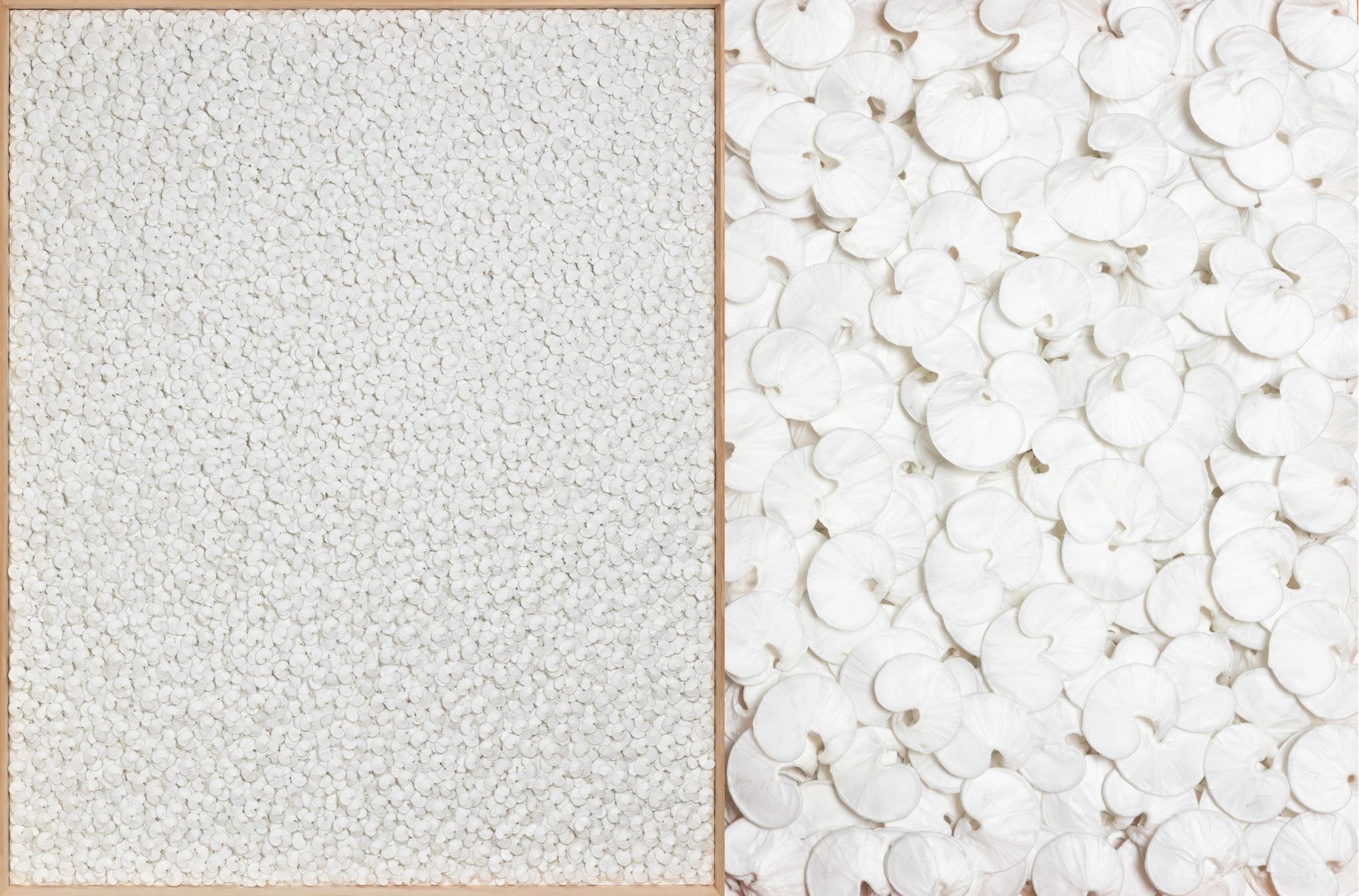
PURE SPIRAL 100 BY KAKU, COMPOSED OF TENS OF THOUSANDS OF HAND COILED WASHI PAPER STRIPS.
Photos courtesy of Ippodo Gallery
Like every piece in acclaimed Japanese artist KAKU’s Washi series, Pure Spiral 100 (2023) is composed of a multitude of strips of traditional mulberry washi paper wrapped around metal wire—hand coiled, coated with an acrylic paint, and then meticulously placed one upon another. Working out of Kanagawa Prefecture, KAKU's meditative method is unceasing; over and over again until hundreds, even thousands—and in this case, tens of thousands—of hand-assembled pieces form a whole greater than its parts. The resulting topographies are imbued with the maker’s careful handiwork and harmonious spirit, and further elevated by the material’s delicate translucency.

KAKU AT WORK IN HIS STUDIO IN JAPAN
Photos courtesy of Ippodo Gallery
Describing his process, Kaku explains: “It is a daily work like reading sutra. Lifework. It is not something special, like trying to express myself as an artist, but something natural. Perhaps it is similar to prayer. I always wear white when I work because I want to be myself. I feel as if I am purified through the work.” And: “The message I want to convey in my work is that the shapes that spill out of my hands during the silent time I spend each day, which is akin to meditation, are always spirals. You could say that it is a form close to my physiology. When the individual pieces begin to come together, I feel as if they emit a voice. The innocent feelings that the primitive man must have had in the distant past melt into the pieces and proliferate with a will. The work aims to be one universe.”
KAKU’s work is represented by New York’s revered Ippodo Gallery.

ARMADILLO SCREEN DESIGNED BY LUKAS WEGWERTH
Photos by Sandra Gramm; Courtesy of the designer
At first glance, Lukas Wegwerth’s unexpected Armadillo Screen seems like something out of a fairy tale, poised to come to life at any moment. The work is part of the German designer’s latest collection, which was presented at Design Miami/ 2023 by Gallery FUMI, consisting of sculptural forms wrapped in layers of hand-assembled wood shingles—every one individually shaped, sanded, and pigmented by Wegwerth’s partner and collaborator Corinna Dehn.
As Wegwerth explains, “Shingles are an interesting example of a ubiquitous principle of building or forming a protective shell—a simple but effective principle found in vernacular architecture, such as cladding and roofing, as well as in the natural world—in fish skins, snakes, butterfly wings, the dorsal shells of armadillos.”

CORINNA DEHN AND LUKAS WEGWERTH WITH THE ARMADILLO COLLECTION
Photo by Sandra Gramm; Courtesy of Lukas Wegwerth
The Berlin-based duo recently began setting up a second studio location in the Vogelsberg region of Germany, where Wegwerth grew up. The Armadillo series' shingles are composed primarily of larch wood, which the pair source in the region and process in their small sawmill there. “To develop a better understanding of sourcing materials for our practice…together with locals, we engage ourselves in the harvesting and processing of wood from forests nearby,” Wegwerth explains. “Vogelsberg is a dormant volcano—nowadays, the region is hilly and rich in forest coverage. The abundance of wood here fostered many applications of the material. Shingles are one application that I became [particularly] interested in,” he says, as historically they were made from leftover wood pieces that were simply too small to be used for furniture making or other building. “They represent the convergence of many ideas in one object—responsible material systems, local resources and productions, and more. I hope the Armadillo series can be read as a playful and positive approach to [investigating] material futures. I’m very interested in exploring its potential.”
